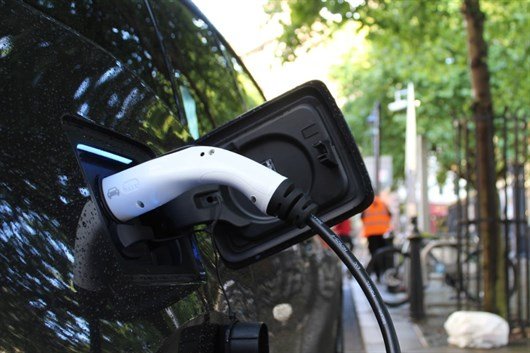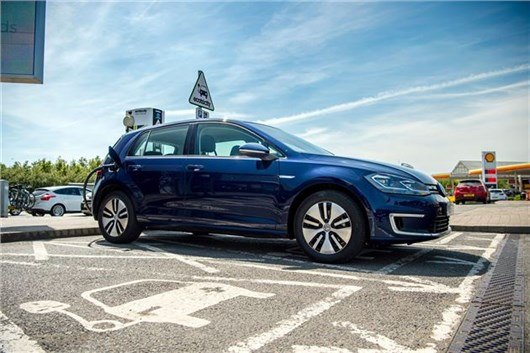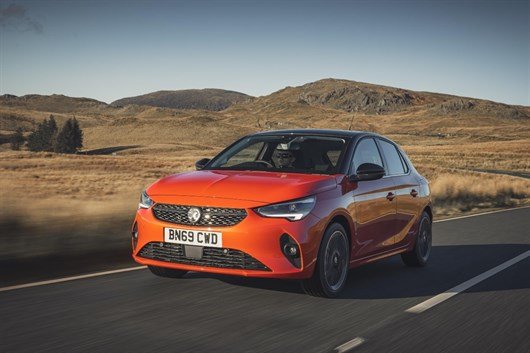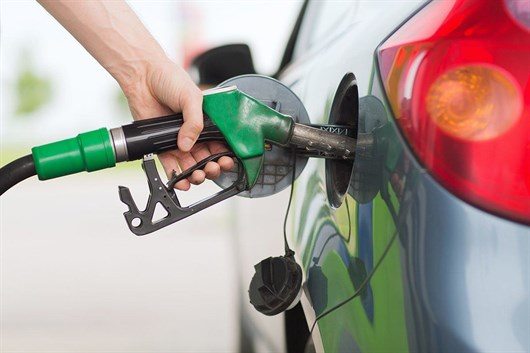What's the future of the UK's fuel stations?

The electric revolution isn’t just coming - it’s here. With manufacturers including Jaguar, Volvo, Fiat and Ford committing to making their car line-ups all-electric between 2025 and 2030, the tide is already turning. But what will happen to the UK's fuel stations?
We know the Government is planning to ban the sale of new cars powered solely by petrol or diesel from 2030 and we know the infrastructure to support the move to electric is in full swing.
But what we don’t know just yet is where that leaves the millions of drivers who’ll still own petrol or diesel cars in 2030, especially considering that the numbers of petrol filling stations across the UK have already dwindled by 35 per cent since 2000.
On top of which, many fuel station operators are struggling financially after long stretches of pandemic-related lockdowns during the last year or so.
Are petrol stations doomed?
As the coronavirus pandemic has battered a fair few industries across the UK, a recent report has emphasised the importance of the convenience shop offering within forecourts. Fewer than one-in-ten forecourt shoppers actually cite fuel as the main reason for their visit, according to Lumina's UK Forecourt Market Report 2021.
When it comes to the number of petrol stations, the UK is home to 8380, according to Statista — a figure that’s fallen significantly from 13,107 in 2000 — with BP, Esso and Shell being the only companies to operate more than 1000 sites.
While the figures look bad on the face of things, fuel stations aren't closing down in droves. In fact, there were only six less petrol stations in the UK in 2020 than in 2019.
"Resilience is certainly the word for those 8384 remaining," says Chairman of the Petrol Retailers and Car Wash Associations, Brian Madderson.
Lumina’s research showed that less than 1 in 10 of forecourt users shopped for fuel only, with convenience store, food-to-go, cash machine, coffee experience, laundromats and automated car washing all providing much needed services.
With ever more petrol and diesel vehicles on our roads, it is unlikely that a sudden and irreversible switch to alternative fuels will happen this decade: cost, range anxiety, ease of recharging are all factors said to be hampering market growth says Madderson.
"Fuel retailers are watching technological developments closely and will invest in electric charging points when they can see opportunity to make a financial return. By and large this is sometime off for the majority."
Are fuel stations converting to become electric vehicle (EV) charging stations?
It isn’t inconceivable to think that fuel station operators won’t shift to cater for electric vehicles in the near future. In fact, some are already starting.
Shell unveiled its first 50kW EV rapid-charging post, capable of recharging a battery from zero to 80 per cent in 30 minutes, in 2017. In 2021, it plans to have a combination of 200 rapid (50kW) and ultra-rapid (150kW) chargers on forecourts located on major routes across the UK.

But Shell isn’t the only energy retailer looking to make moves in this sector either. BP Pulse is working with local authorities across the UK to upgrade public charging points with faster, more reliable systems - meaning electric car drivers will be able to charge in more places, more easily. The charging company, formerly known as BP Chargemaster, has committed £2m in total.
The company has already agreed to more than £400,000 in infrastructure investment to replace more than 50 charge points, which are typically owned by local authorities and were originally installed with Government funding a decade ago as part of the Plugged in Places scheme.
>>> Electric cars with the longest range
There aren't that many electric vehicles though, right?
Let’s do a quick stocktake. At the end of December 2020, there were 38.6 million licensed vehicles in Great Britain, according to the RAC. Currently, pure electric, hybrids and hybrid electric vehicles have a relatively small market share versus petrol and diesel. However, with that said, things can change quickly — just look at the decline of diesels.

The BBC recently ran an article, which stated: "Electric cars are going to send the petrol station business into a death spiral over the next two decades, making electric vehicles the default option for all car owners. Why? Because charging electric vehicles is going to become much more straightforward than refuelling petrol and diesel cars."
In May 2021, pure-electric car sales in the UK increased by 441 per cent compared to the same month in 2020, but this was also when dealerships were closed to the public during the first lockdown.
Of the 156,737 new cars registered, 13,120 (8 per cent) were pure-electric cars, 9855 (6 per cent) were plug-in hybrids (PHEVs) and 13,000 (8 per cent) were full hybrids. Plug-in hybrids jumped by a whopping 1092 per cent since May 2020.
Pure-petrol cars accounted for 48 per cent of last month’s total, but mild-hybrid petrols made up 12 per cent of total registrations for the month. Diesel and mild-hybrid diesel models accounted for the remainder of sales, at 10 per cent and 7 per cent respectively.
Yet, none of the cars on the top 10 best-sellers list for May 2021 were pure-electric. The Vauxhall Corsa (which is available in electric form as the Corsa-e) came in second behind the Volkswagen Golf (available in both eHybrid and GTE plug-in forms). In fourth place was the Mercedes A-Class, which is also available as a plug-in hybrid.

So, still a reasonably small market. However, when millions of us want to recharge, there will be a boom in charging stations — like the new Braintree Electric Forecourt in Essex, operated by Gridserve (with plans for 100 more) — just as there was a surge in petrol station construction a century ago.
Can the UK energy grid cope with a big increase in the number of EVs needing charged?
There are two aspects to whether we have the capacity to manage lots of electric cars being plugged in at once, according to the National Grid – whether there’s enough energy and then whether there’s sufficient capacity on the wires that carry that energy to where it’s needed.
Due to improved energy efficiency, such as the installation of solar panels, the nation’s peak demand has fallen by roughly 16 per cent since 2002. Even if the unthinkable happened and we all switched to EVs overnight, the National Grid predict that demand would only increase by around 10 per cent. So we’d still be using less power as a nation than we did in 2002 and this is well within the range of manageable load fluctuation.

However, there remains the issue of when that power demand actually happens. The traditional evening peak of electricity demand is between 6pm and 8pm, and this might well coincide with people returning from their commute and plugging in their cars.
With this in mind, recently the Government’s EV Energy Taskforce recommended that all future car chargers should be ‘smart by design’. This means that no matter what time you come home and plug your car in at, it will charge when you need it but will pause during that evening peak when energy is most expensive and demand on the grid is highest.
With that said, the National Grid says some targeted investment is likely to be needed to ensure there are appropriate places where drivers can access sufficient high power charging away from home.
This particularly needs to be on the motorway network to give confidence to those travelling longer distances. Fortunately, there’s already a lot of electricity infrastructure right next to motorways as power lines are often run beside them for practical reasons.

 Georgia Petrie
Georgia Petrie
 Honest John Awards 2017: Land Rover Discovery Sport named Most Popular SUV for second year in a row
Honest John Awards 2017: Land Rover Discovery Sport named Most Popular SUV for second year in a row
 2022 Smart #1 SUV: price, specs and release date
2022 Smart #1 SUV: price, specs and release date
 2023 Ferrari Purosangue SUV: Prices, specs and release date
2023 Ferrari Purosangue SUV: Prices, specs and release date
 Citroen DS3 Racing revealed
Citroen DS3 Racing revealed
 Infiniti adds diesel to the range
Infiniti adds diesel to the range
 Volvo XC90 chosen as SUV of the year at 2014 Honest John Awards
Volvo XC90 chosen as SUV of the year at 2014 Honest John Awards
 March new car registrations better than expected
March new car registrations better than expected





.jpg)





